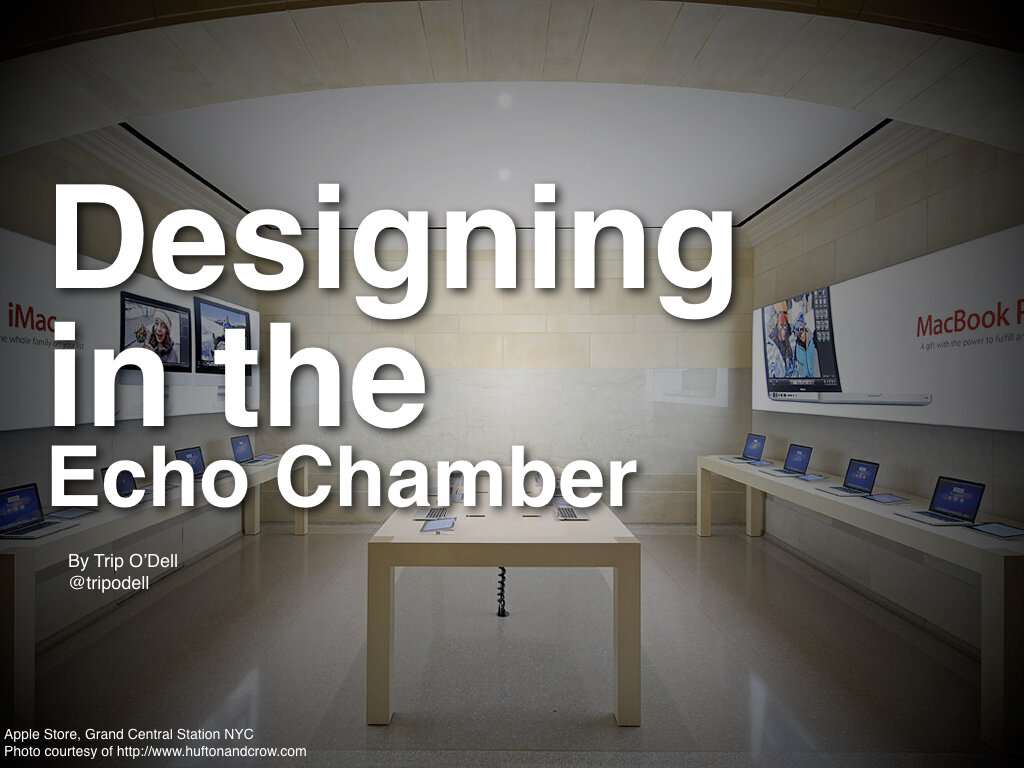Designing in the Echo Chamber
Or why chasing “newer, faster and better” prevents us from solving bigger, more interesting problems.
Few people live a more technology- and media-saturated life than the UX designer.
Many of us are geeks and technophiles at heart. We are optimists. We like solving problems and creating delightful, predictable, intuitive solutions for others. But in our efforts to achieve this, are we failing to perceive larger systemic problems — or even perpetuating them by relying on the familiar?
Two billion new people will join the connected world by 2020. Many of them live in developing regions of the world where literacy rates are lower, and English literacy rates are lower still.
Soon, a new majority of users will bring entirely different needs and cultural metaphors that drive the ways they use technology.
As UX professionals, we can bridge these technical and cultural gaps to reach the hundreds of millions of new users coming online every year.
This means adapting our thinking and our tools so we’re armed to face new sets of problems — and able to design solutions that resonate far beyond the limited borders we initially target.
In this talk, I explore some emerging technology trends and use cases from both the developed and developing worlds. I demonstrate how current UX patterns, metaphors, and concepts may actually inhibit understanding for new users who don’t share our cultural contexts.
I examine the opportunities these challenges present for new products, services, and startups to fuel entire markets and even change cultures through the power of design.

